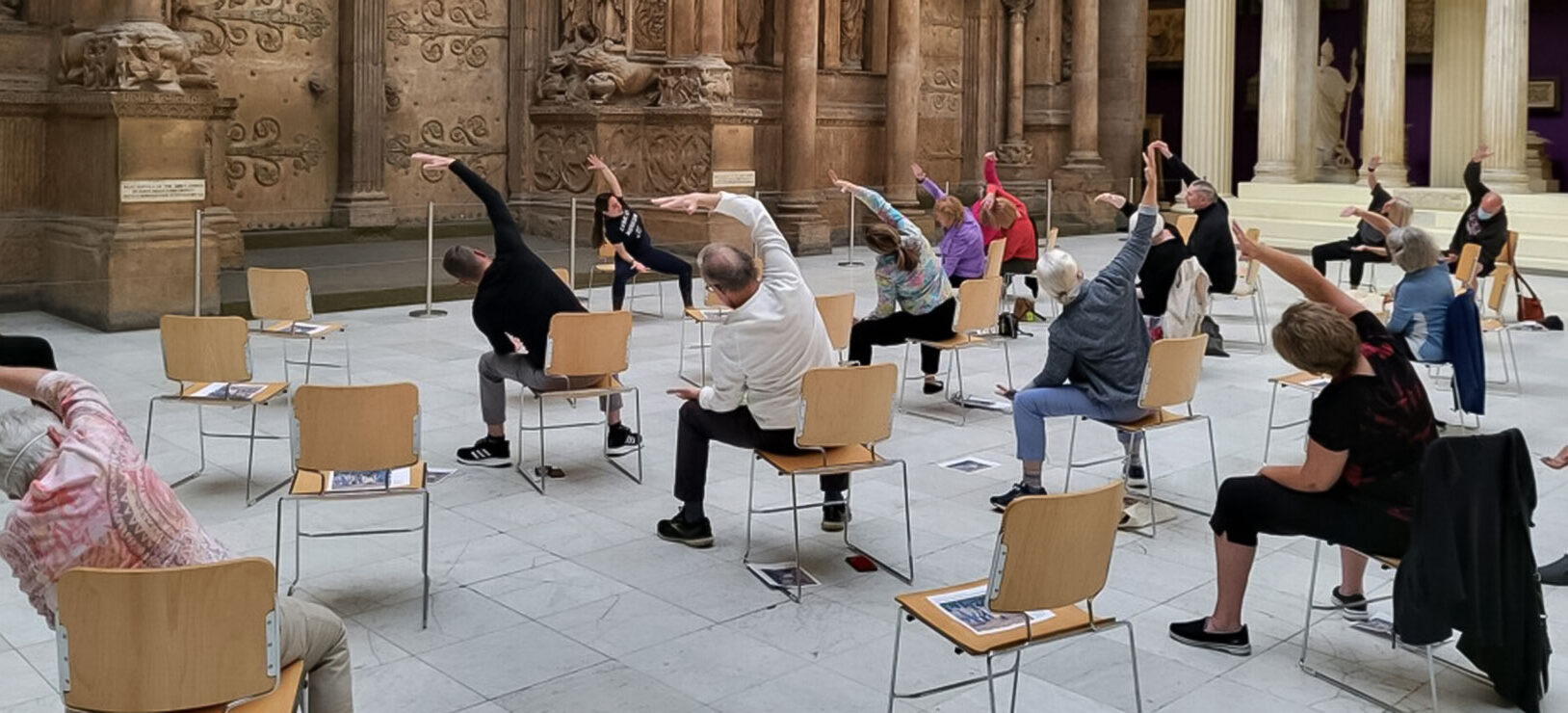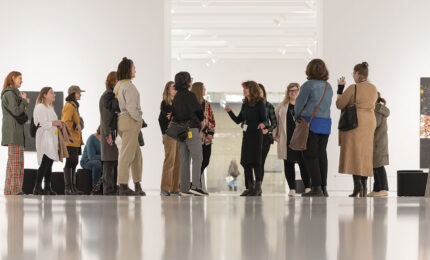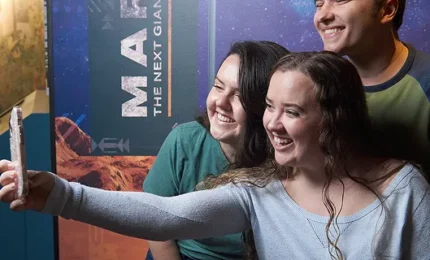It’s 9:30 on a Wednesday morning, and even though Carnegie Museum of Art has not yet opened to the public, about 15 people aged 55 and up have gathered inside the museum’s Hall of Architecture. Sitting in simple, straight-back chairs, they settle in among the hall’s famous architectural casts.
Many have been to the museum before. But Wednesdays are different. Wednesdays are about looking beyond the art to see themselves in a new way.
Sitting front and center, yoga practitioner Lydia Kilian leads the group on a half-hour journey of gentle movement inspired by their surroundings. Hushed by the massive skylight above and the marble floors below, her words quietly encourage them to breathe, to reach, to experience.
“I always learn something about myself, something about life,” says John Sonnenday, a regular during these Wednesday morning sessions. “It’s all about being in the moment, being able to experience your body, your feelings, your muscles—and not thinking about what you have to do tomorrow or what you forgot to do yesterday.”
The scene seems like it’s part of some surrealist painting; it just doesn’t quite make sense. But associate curator of education Lucy Stewart thinks it’s picture-perfect.
The chair yoga session is part of the Museum of Art’s Mindful Museum program, a collection of activities designed specifically for the 55-and-older crowd. Participants enjoy drawing and artmaking, art tours, and guided meditations.
During its inaugural eight-month run through December 2022, nearly 125 people paid the one-time registration fee ($50 for members, $80 for non-members) and enjoyed unlimited access to the Wednesday and online offerings.
Given its immediate success, Mindful Museum is set to return in April 2023.
“I feel strongly that museums should be resources for people,” Stewart says. “We are here for people to use us and to be part of us; not for us to dictate to them.”
That deceivingly simple philosophy represents a shift in thinking for many museums, which have traditionally focused on attracting people through their exhibitions. But seniors, it seems, aren’t attending museum shows in large numbers.
“I started counting my steps as I walked through the museum, and it occurred to me that walking in a museum is intensely more interesting than walking in the mall.”
– Lucy Stewart, Associate Curator Of Education At Carnegie Museum Of Art
The U.S. census projects that, in less than 15 years, seniors will outnumber kids 17 and younger for the first time in the nation’s history. Given that statistic, you might expect that museum galleries would be overflowing with seniors. In reality, the opposite is true. As reported in a recent study by the American Alliance of Museums, older people are least likely to visit museums and participate in educational programming. For that reason, seniors are underserved by today’s museums.
That wasn’t exactly news to Stewart. “Back in 2017 when I took over In the Moment, the museum’s program for people with Alzheimer’s and other dementias, I realized pretty quickly that it was the only thing we were doing for the senior audience.”
She also realized that its key components—socialization, movement, and cognitive support—could benefit anyone over 55.
Those needs only became more critical amid the pandemic. As the Museum of Art looked to expand its online options, Stewart began to expand her thinking. “Those early days of COVID programming helped me to learn more about how art can be used as a catalyst for people to interact with each other. And so, the idea of the Mindful Museum developed organically over these past few years.”
But it wasn’t just with the works of art that Stewart wanted people to interact. She saw the entire building as an opportunity.
“I started counting my steps as I walked through the museum,” Stewart recalls, “and it occurred to me that walking in a museum is intensely more interesting than walking in the mall.”
Not surprisingly, step counts are included in every Mindful Museum art path—self-guided tours through the galleries that include meditations at select works of art and step counts between them. But for Sonnenday, it’s where the steps take you that counts the most. “On one tour,” he recalls, “I was looking at a painting of an iceberg with a ship and one lone figure in it. The suggestion was that the figure was the artist beginning to contemplate his own sailing off.
“We are all on this journey and we will all sail away one day,” Sonnenday continues. “But, in the meantime, we want to engage as much as we can. These meditations have become a part of my weekly routine. They help me to listen to what I’m experiencing.”







